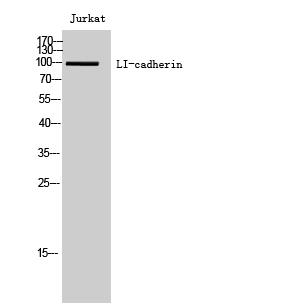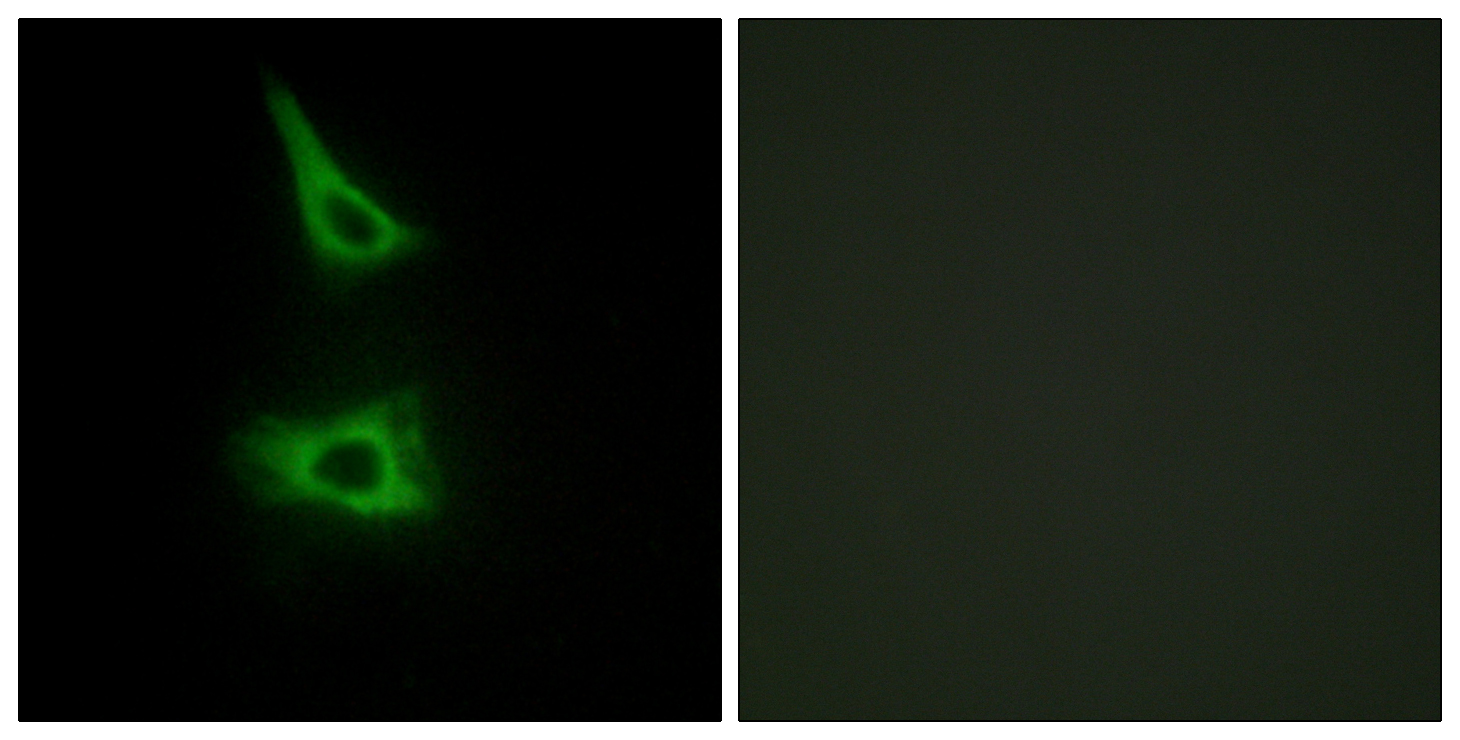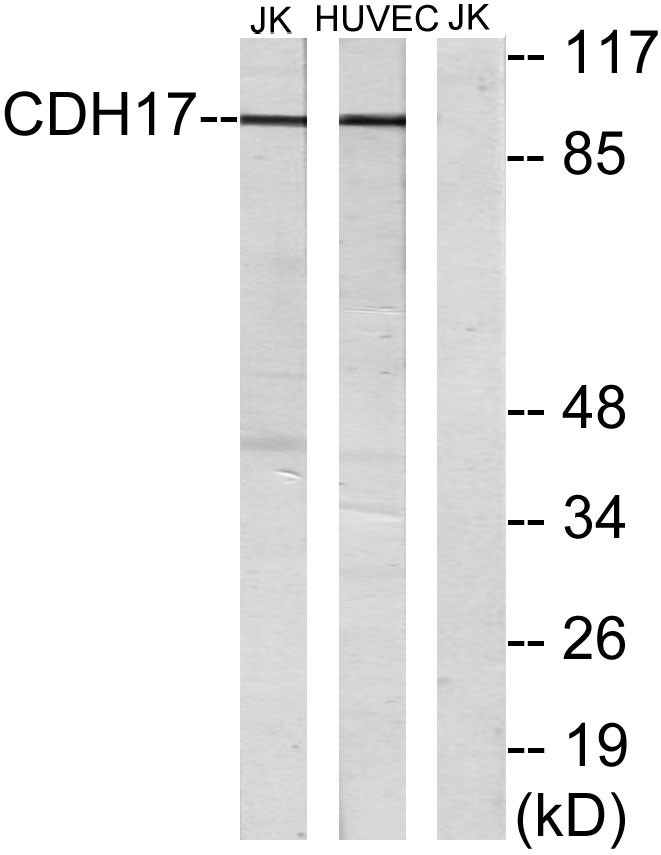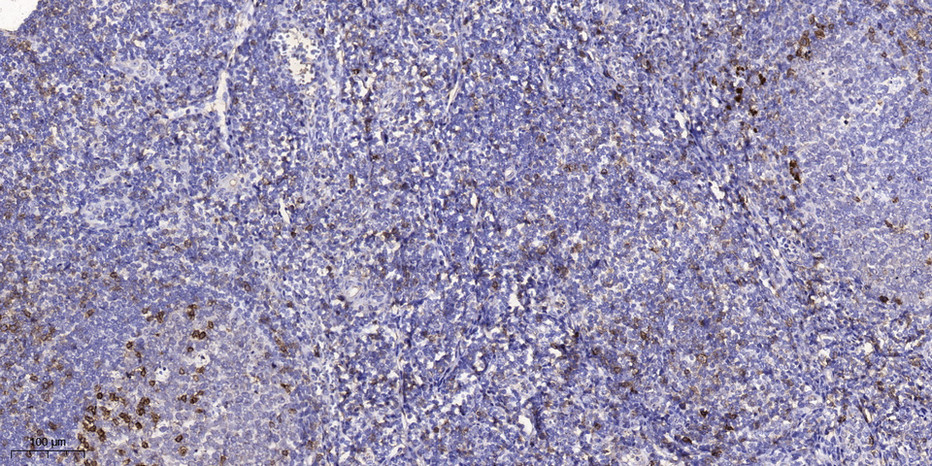LI-cadherin Polyclonal Antibody
- Catalog No.:YT2560
- Applications:WB;IHC;IF;ELISA
- Reactivity:Human;Rat;Mouse;
- Target:
- LI-cadherin
- Fields:
- >>Gastric cancer
- Gene Name:
- CDH17
- Protein Name:
- Cadherin-17
- Human Gene Id:
- 1015
- Human Swiss Prot No:
- Q12864
- Mouse Swiss Prot No:
- Q9R100
- Immunogen:
- The antiserum was produced against synthesized peptide derived from human CDH17. AA range:341-390
- Specificity:
- LI-cadherin Polyclonal Antibody detects endogenous levels of LI-cadherin protein.
- Formulation:
- Liquid in PBS containing 50% glycerol, 0.5% BSA and 0.02% sodium azide.
- Source:
- Polyclonal, Rabbit,IgG
- Dilution:
- WB 1:500 - 1:2000. IHC 1:100 - 1:300. IF 1:200 - 1:1000. ELISA: 1:40000. Not yet tested in other applications.
- Purification:
- The antibody was affinity-purified from rabbit antiserum by affinity-chromatography using epitope-specific immunogen.
- Concentration:
- 1 mg/ml
- Storage Stability:
- -15°C to -25°C/1 year(Do not lower than -25°C)
- Other Name:
- CDH17;Cadherin-17;Intestinal peptide-associated transporter HPT-1;Liver-intestine cadherin;LI-cadherin
- Observed Band(KD):
- 99kD
- Background:
- This gene is a member of the cadherin superfamily, genes encoding calcium-dependent, membrane-associated glycoproteins. The encoded protein is cadherin-like, consisting of an extracellular region, containing 7 cadherin domains, and a transmembrane region but lacking the conserved cytoplasmic domain. The protein is a component of the gastrointestinal tract and pancreatic ducts, acting as an intestinal proton-dependent peptide transporter in the first step in oral absorption of many medically important peptide-based drugs. The protein may also play a role in the morphological organization of liver and intestine. Alternative splicing results in multiple transcript variants. [provided by RefSeq, Jan 2009],
- Function:
- function:Cadherins are calcium dependent cell adhesion proteins. They preferentially interact with themselves in a homophilic manner in connecting cells; cadherins may thus contribute to the sorting of heterogeneous cell types. LI-cadherin may have a role in the morphological organization of liver and intestine. Involved in intestinal peptide transport.,similarity:Contains 7 cadherin domains.,tissue specificity:Expressed in the gastrointestinal tract and pancreatic duct. Not detected in kidney, lung, liver, brain, adrenal gland and skin.,
- Subcellular Location:
- Cell membrane ; Single-pass type I membrane protein .
- Expression:
- Expressed in the gastrointestinal tract and pancreatic duct. Not detected in kidney, lung, liver, brain, adrenal gland and skin.
- June 19-2018
- WESTERN IMMUNOBLOTTING PROTOCOL
- June 19-2018
- IMMUNOHISTOCHEMISTRY-PARAFFIN PROTOCOL
- June 19-2018
- IMMUNOFLUORESCENCE PROTOCOL
- September 08-2020
- FLOW-CYTOMEYRT-PROTOCOL
- May 20-2022
- Cell-Based ELISA│解您多样本WB检测之困扰
- July 13-2018
- CELL-BASED-ELISA-PROTOCOL-FOR-ACETYL-PROTEIN
- July 13-2018
- CELL-BASED-ELISA-PROTOCOL-FOR-PHOSPHO-PROTEIN
- July 13-2018
- Antibody-FAQs
- Products Images

- Western Blot analysis of Jurkat cells using LI-cadherin Polyclonal Antibody

- Immunofluorescence analysis of HeLa cells, using CDH17 Antibody. The picture on the right is blocked with the synthesized peptide.

- Western blot analysis of lysates from Jurkat and HUVEC cells, using CDH17 Antibody. The lane on the right is blocked with the synthesized peptide.

- Immunohistochemical analysis of paraffin-embedded human tonsil. 1, Antibody was diluted at 1:200(4° overnight). 2, Tris-EDTA,pH9.0 was used for antigen retrieval. 3,Secondary antibody was diluted at 1:200(room temperature, 45min).



